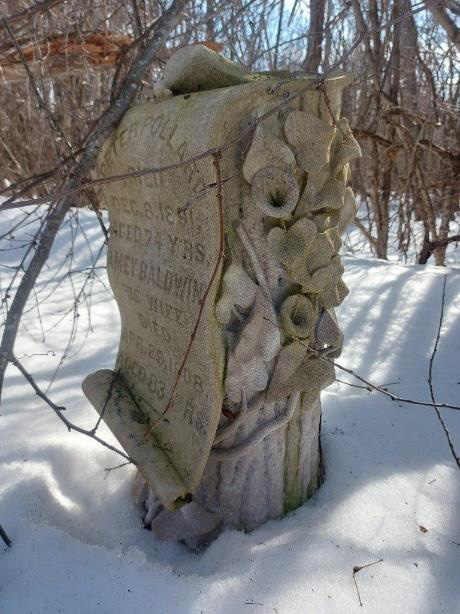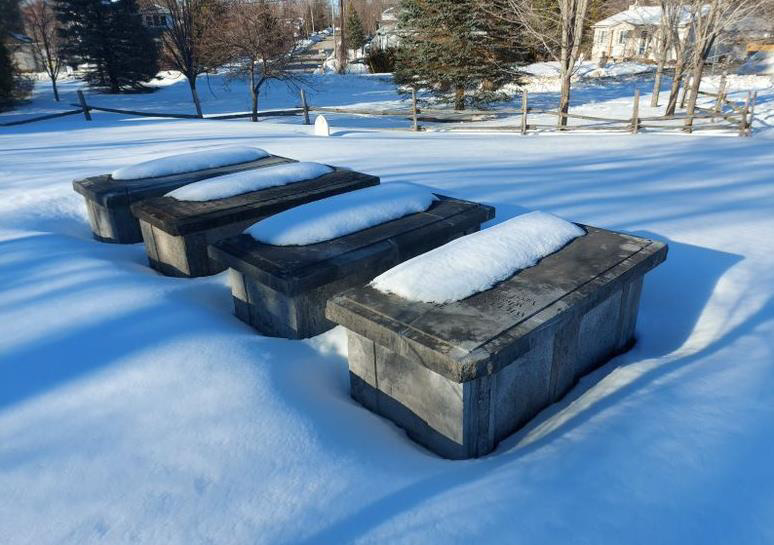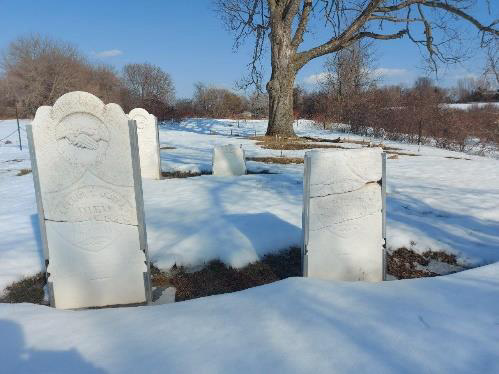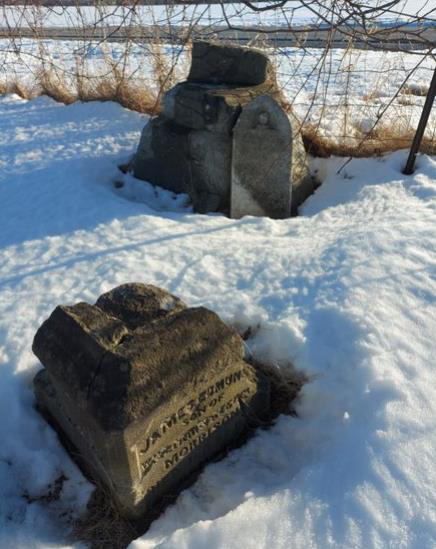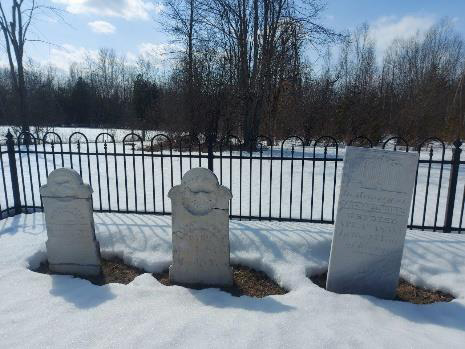McGuigan Cemetery
McGuigan Cemetery is one of the oldest cemeteries not only along the Rideau Canal but in Eastern Ontario. In use between 1806-1899, the grave markers are invaluable historic records that tell a story of who lived and worked and died in the area.
Graves include those of:
the United Empire Loyalists
British veterans of the Napoleonic War
Irish labourers who died of accident or disease during the construction of the Rideau Canal
Pioneer sons and daughters whose family names are still dominant in the area
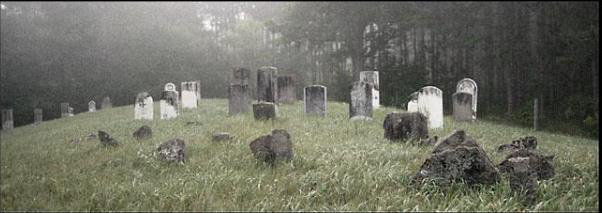
LOCATION
448 Burritts Rapids Road (County Road 23),
Merrickville-Wolford
For a complete history of the McGuigan Cemetery, visit the Merrickville Historical Society website or download the History of McGuigan Cemetery.
There are two bronze plaques which read as follows:

McGUIGAN CEMETERY
This cemetery is one of the oldest burying grounds not only along the Rideau River but in Eastern Ontario. It was used for approximately one hundred years between 1800 and 1900. Unfortunately, there are few written records anywhere either as to its existence or as to who was buried within its confines. The tombstones discovered during its restoration in 1979 and 1980 by the Merrickville and District Historical Society tell only a small part of the role it played in the history of the area.
It was named after Miles McGuigan, an Irishman who served in the Peninsular War under Wellington in the 81st Regiment and who was later wounded at Waterloo. As an army pensioner after the War of 1812 he married the widow Leahy, who owned the land, a Crown Grant, on which the cemetery is located. Legend has it that he was buried here but his grave has never been found. The oldest known grave is that of Samuel McRae, one of the earliest pioneers of the Lower Rideau Settlement.

IN REMEMBRANCE
This memorial marks the area where an unknown number of persons were buried in this cemetery between the years 1800 and 1900. Despite the scarcity of records, it is believed that many died of pestilence, principally malaria, during the construction of the Rideau Canal. From 1826 to 1832, they were mostly Irish labourers and the children of pioneer settlers. Their graves were marked only by simple fieldstones, some of which remain visible.
May They Rest In Peace.


